We have previously covered investing in a 401k plan from the employee’s perspective. Today we’ll turn that around and focus on 401(k) plans from the business owner’s standpoint.
A 401k and profit sharing plan can be an excellent addition to an employee benefits package. For business owners, it can provide multiple benefits for both themselves (income tax benefits, significant annual savings) and their company (potential increase in retention, competitiveness in hiring, flexibility in plan design). A 401k and profit sharing plan does come with some level of complexity and cost, so it is important to weigh the pros and cons.
What kind of business can most benefit from a 401k? Medium to large sized companies who have a clearly defined benefits budget, are okay with complexity and annual contributions in exchange for higher contribution limits and flexibility in designing a plan to fit your company. Small businesses and solo entrepreneurs can also have a 401k plan, but should compare them against other group retirement plan options.
Who is eligible to contribute? Depends on how the plan is set up. At a minimum, all employees age 21+ who have worked for the company for at least 12 months are eligible, though the business owner can choose to be less restrictive (reduce the age limit or the work requirement). Part-time employees can also be eligible. Union employees of a company typically will have their own separate retirement plan and are not normally participants in the same plan as non-union employees.
How much can employees contribute? Employees including the business owner can contribute directly from their paycheck. They can contribute up to 100% of their compensation, with a hard limit of $23,000 if under age 50 or a limit of $30,500 if age 50+.
How much does the company contribute? The employer match can be structured many different ways but once set, it cannot easily be changed. One typical version of a match is “100% of the first 3% of salary, plus 50% of the next 2% of salary”. In simple terms, that means if the employee contributes at least 5% from their paycheck, the business will contribute 4%. In this instance, the company contribution is capped at 4% of salary – it can be less, if the employee contributes less than 5%, but it will not be more.
Who owns the balances in the 401k? The employee owns (is “vested”) 100% of their personal contributions AND the employer matching contributions. Profit sharing contributions, if any, are usually subject to a vesting schedule.
Why would I do a profit sharing contribution? Profit sharing contributions are optional every single year. In years where a profit sharing contribution is made, the total amount of the contribution is completely discretionary. From the personal standpoint of the business owner, a profit sharing contribution is the only way to “max out” annual additions to their 401k. The IRS sets an annual limit to total contributions into 401k accounts. For 2024, that limit is $69,000. That maximum dollar amount is the sum of Personal Contributions + Employer Matching Contributions + Profit Sharing Contributions. For example, a business owner with $200,000 in compensation contributes the personal maximum of $30,500 and receives a 5% employer match equally $10,000. That still leaves $28,500 available dollars for contribution before hitting the $69,000 maximum. The only way to add those extra dollars is through a profit sharing contribution. But all eligible employees must receive a fair portion of the total profit sharing dollars available – it cannot be limited to the ownership group or some other small group. There are multiple allowable ways of doing this, however. As mentioned above, profit sharing contributions can also be subject to a vesting schedule, meaning employees who have not worked for a specified amount of time (typically 4-6 years) do not have the ability to leave the company and take 100% of their profit sharing funds with them.
What kinds of options do I have? Among other things, you get to make decisions on employee eligibility, how much in matching funds you want to provide, and whether you want to split the cost of the plan with employees.
How much work does a 401k plan take? As the 401k plan’s “sponsor,” you are a fiduciary, which means you have a duty of faithfulness towards all the participants in the plan and you are therefore ultimately responsible for making sure that all of the legalities and rules are followed with regard to a 401k. That does not mean you have to do everything. As the business owner, you can hire professionals to handle the day-to-day recordkeeping, annual administration, and ongoing investment reviews, subject to your ultimate oversight. There are at least three and as many as five different players involved in the creation and running of a 401k – so you are not doing this alone. The majority of the work with a 401k comes within the first year, and there are a number of steps to getting one set up. You will need to make some up-front decisions about how your specific plan is designed, but as the plan advisor, we will help you walk through that. You or someone on your team will also have some initial setup work – providing employee reports, signing documents, etc. The entire plan setup typically takes about 45 days. The bulk of the work during that setup period will not be done by you, but by one or more of the other players involved. Your plan advisor will be available to help with anything that is required of you. Once the plan is set up, your plan advisor can help educate your employees about the details of the new 401k plan and can facilitate employees enrolling into the plan. Processing payroll and notifying the plan recordkeeper about employee hires and terminations are the most significant ongoing tasks with regards to the 401k. Beyond that, there are some annual requirements, most of which take a minimal amount of time.
How much does a 401k plan cost? Hard costs vary depending on plan complexity and a few other factors, but we find that a brand-new 401k plan typically costs between 1.5% to 3.0% of total plan assets annually. That amount typically goes down as total plan assets go up over the years. Added to that would be the amount of any employer matching contributions (typically averaging between 2% to 4% of employee payroll) and any profit sharing contributions (completely discretionary). Your specific plan may be different, but any costs paid by the business are deductible to the business. Some costs can be borne by the plan’s participants instead of by the business.
This material was created for educational and informational purposes only and is not intended as ERISA, tax, legal or investment advice. If you are seeking investment advice specific to your needs, such advice services must be obtained on your own separate from this educational material.








